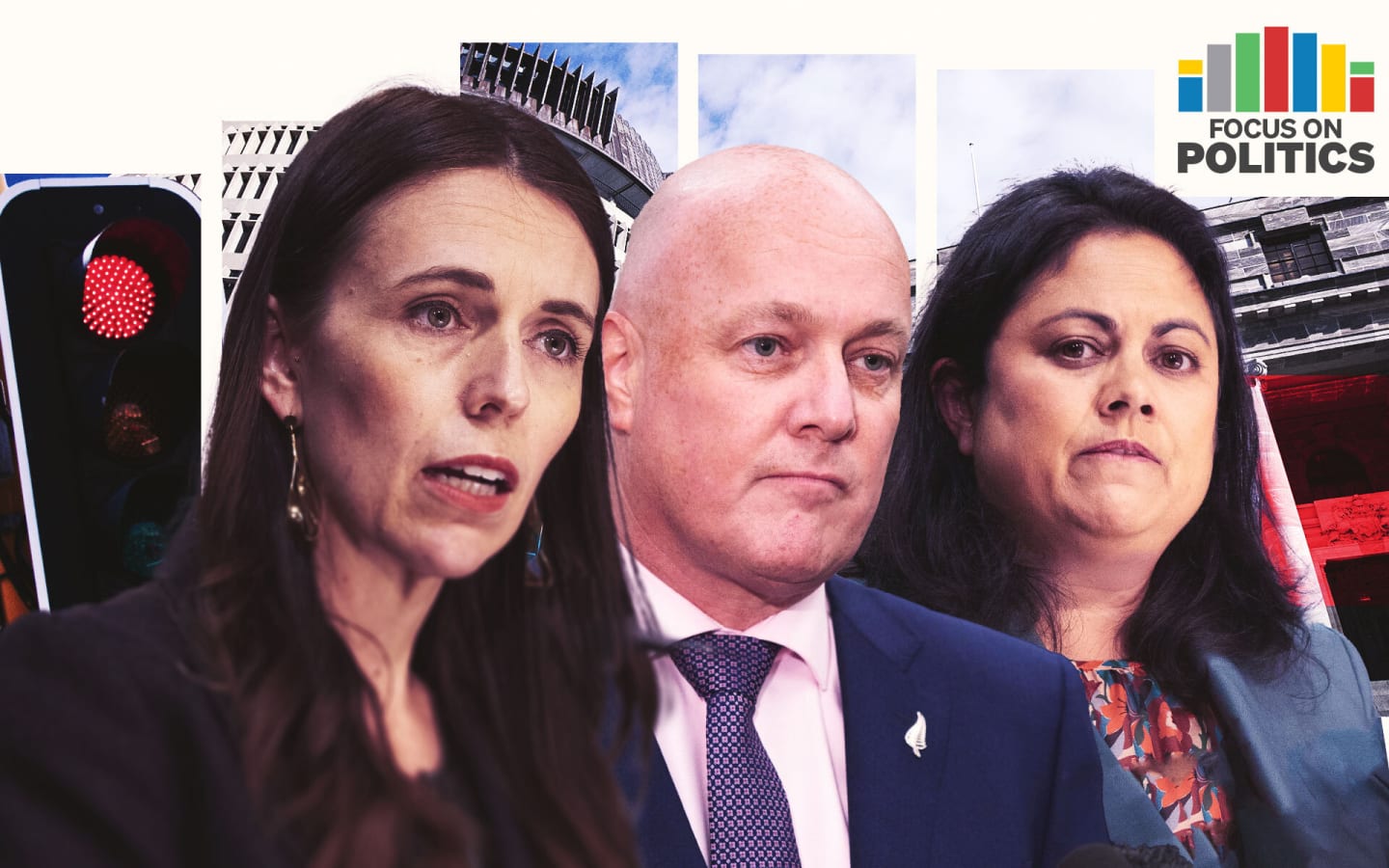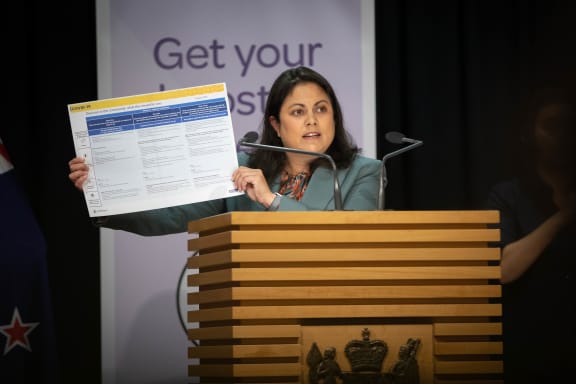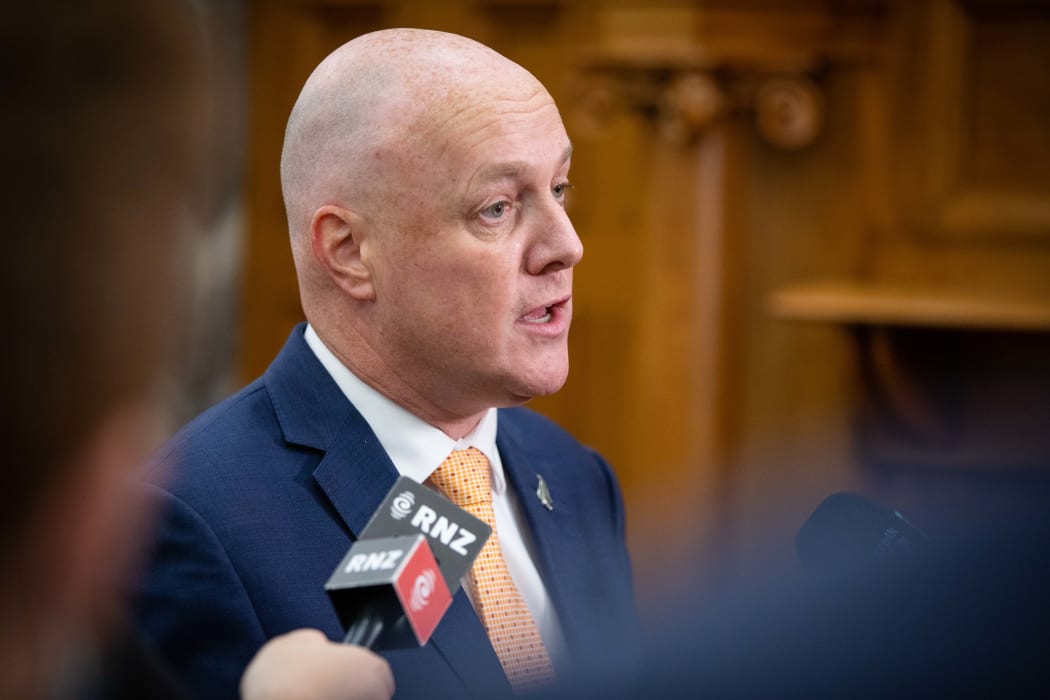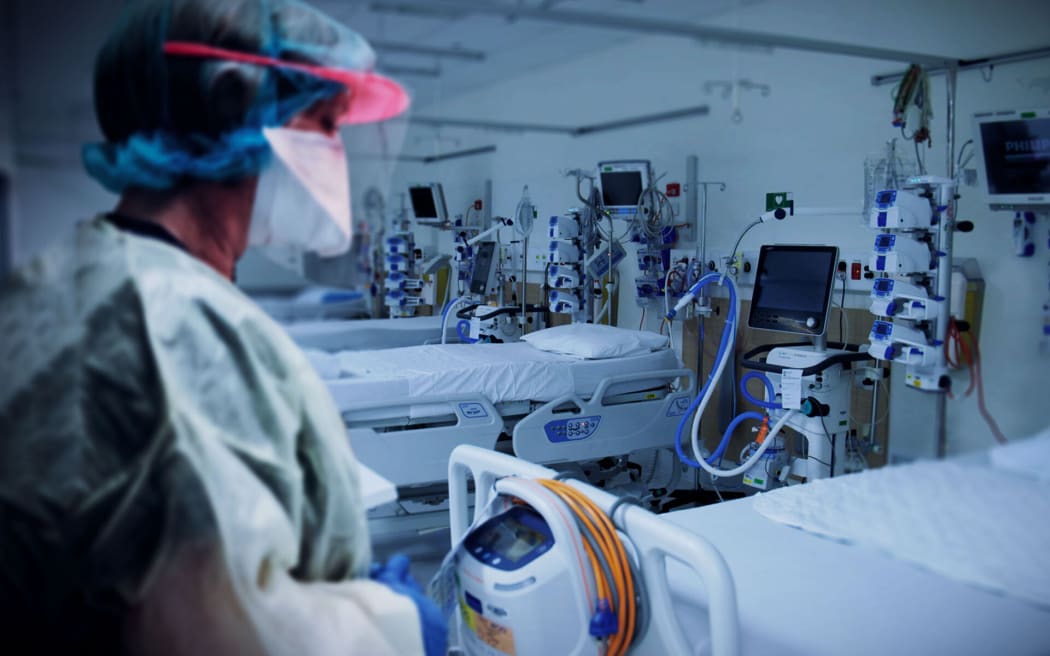"We know that the boosters are only just rolling out now, and we've only just started to immunise our children ... we just want people to be safe." - Green MP Elizabeth Kerekere
After two years of dealing with Covid-19 in its various forms, the government and Prime Minister Jacinda Ardern are heading into another gauntlet, likely compounded by supply chain disruption and sky-rocketing inflation.
Controversial measures like vaccine mandates have introduced a toxicity and feeling of alienation in parts of the community, reflected back onto the community and the prime minister.
The opposition has an important role to play but will have to step carefully in its criticisms and approach.
Both sides know Covid can prove deadly in more ways than one.

Photo: RNZ / Vinay Ranchhod
New Zealanders' relatively Covid-free summer break came to an abrupt halt on 21 January - with a new variant circulating in Aotearoa the traffic light had turned red, prompting the cancellation of large events across the country.
Red is not the lockdowns of the past - its aim is to keep things as normal as possible - but Omicron is a different beast: usually a milder infection for the vaccinated, but incredibly infectious. The government is preparing for case volumes of 50,000 a day.
This week, the government announced its plans to deal with such a flood of illness: Stricter rules for mask use, a focus on increased testing capacity, and a three-phase approach to tackling rising case numbers.
On Wednesday, Associate Health Minister Ayesha Verrall explained the current Phase One focuses on intensive testing and contact tracing - the familiar stamping out of the virus.

Ayesha Verrall Photo: RNZ / Angus Dreaver
Phase Two kicks in with about 1000 cases a day, focusing on protecting the vulnerable and slowing the spread. It would see cases notified via text and email, case isolation dropping from 14 to 10 days, and contacts' isolation from 10 days to seven.
In Phase Three, with thousands of cases a day, contact tracing will be targeted to those most vulnerable, with cases relied on to self-notify their close contacts. The majority of cases would be managing their own care at home.
Read more:
- Health experts warn of risks in phased approach to tackle Omicron outbreak
- Labour confident, National concerned in face of Omicron
- Covid-19 face masks: What you need to know
- Māori health leader calls for targeted strategy for Omicron
- Modelling suggests NZ could face peak of 80,000 daily infections
Up to 350,000 people could be isolating at home at the peak. Some will be able to work from home, but many - such as those working in retail, hospitality or trades - will not.
Employment lawyer Barbara Buckett says this is going to be very challenging, and will hurt employees and employers alike.
"Particularly small businesses. To sustain a small business like hospitality with a loss of, and we're not just talking possibly one employee we're talking, probably, many ... some of them are hanging on now."
Government subsidies includes the Leave Support Scheme for those unable to work because they are in isolation or awaiting test results. There's also a Short Term Absence payment for employees awaiting test results at home - the catch is, the employer is the one who can apply.
The RAT race and health capacity
Crucially for keeping the country operating, asymptomatic close contacts deemed "critical" workers will be able to return to work early with a negative rapid antigen test - or RAT. Exactly who that covers has yet to be defined and many industries and other organisations will be watching keenly for who's in and who's out.
The tests themselves have also proven political.
For months, the opposition has been calling for the government to approve their use and stockpile supplies. Now, National leader Christopher Luxon says the government has been requisitioning the RATs private businesses had themselves ordered, and in some cases paid for.

National's leader Chris Luxon Photo: RNZ / Angus Dreaver
"You've got a lot of very good employers who are caring deeply about their employees, who have gone off, used the approved tests, secured a supply and brought them into the country and it looks like the government is actually commandeering that supply and then taking it for themself," Luxon told Morning Report.
"Yes we've only got a handful in the country ... it's all a little bit too late. So I understand what the government's doing in terms of trying to commandeer from the private sector, but I don't think that's the right thing to have done."
Read more:
- Govt 'commandeered' 100k RAT order - company
- Next phases of government's Omicron plan revealed
- Govt priority in rapid antigen test orders 'unfair' on businesses
- Rapid antigen tests: Business 'has part to play'
Finance Minister Grant Robertson says the government's job is to co-ordinate supply and ensure critical businesses like supermarkets can keep operating, along with critical water, transport and power infrastructure.
"This is about what we call a return to work, or test-to-work regime that means that if somebody is a contact of someone with Omicron and they are in one of those critical industries, we can get them back to work using one of those rapid antigen tests."
Caught in the middle are the groups working with pharmaceutical companies to supply RATs to New Zealand businesses.
Health Works Group director Clair Connor said it had 100,000 RATs ordered and paid for this week, now unavailable after the government announced it had tens of millions on order. InScience in the same position.
Hospital and intensive care unit (ICU) capacity is another pressure point. There's been fierce debate about exactly how many ICU and High Dependency Unit beds are available.
Health Minister Andrew Little puts it at about 550, clinicians on the ground argue it's closer to 350.
Intensive Care Society chair Andrew Stapleton, an ICU specialist, says at face value, wards and emergency departments may see the biggest impact from the less severe Omicron strain, but ICUs could feel the brunt if the outbreak is very sudden.

Photo: RNZ / Vinay Ranchhod
"If lots of people get sick but it's spread out nicely over a year we'll cope nicely with that, I suspect. If there's an enormous surge and lots of patients are very sick all at once it'll be a lot harder to deal with.
he other big impact could be several staff catching the very contagious Omicron around the same time, he says.
"Up to 20 percent of staff might be away just as we're at our busiest, looking after patients. And as we've talked about all the way through this outbreak there's no real bed without a nurse at the side of the bed. So fewer nurses means fewer beds, and that will put stress on the system and has done elsewhere."
In today's Focus on Politics podcast, Political Editor Jane Patterson assesses the government's readiness for the Omicron variant.
Listen free to Focus on Politics on Apple Podcasts, on Spotify, on iHeart Radio or wherever you get your podcasts.


